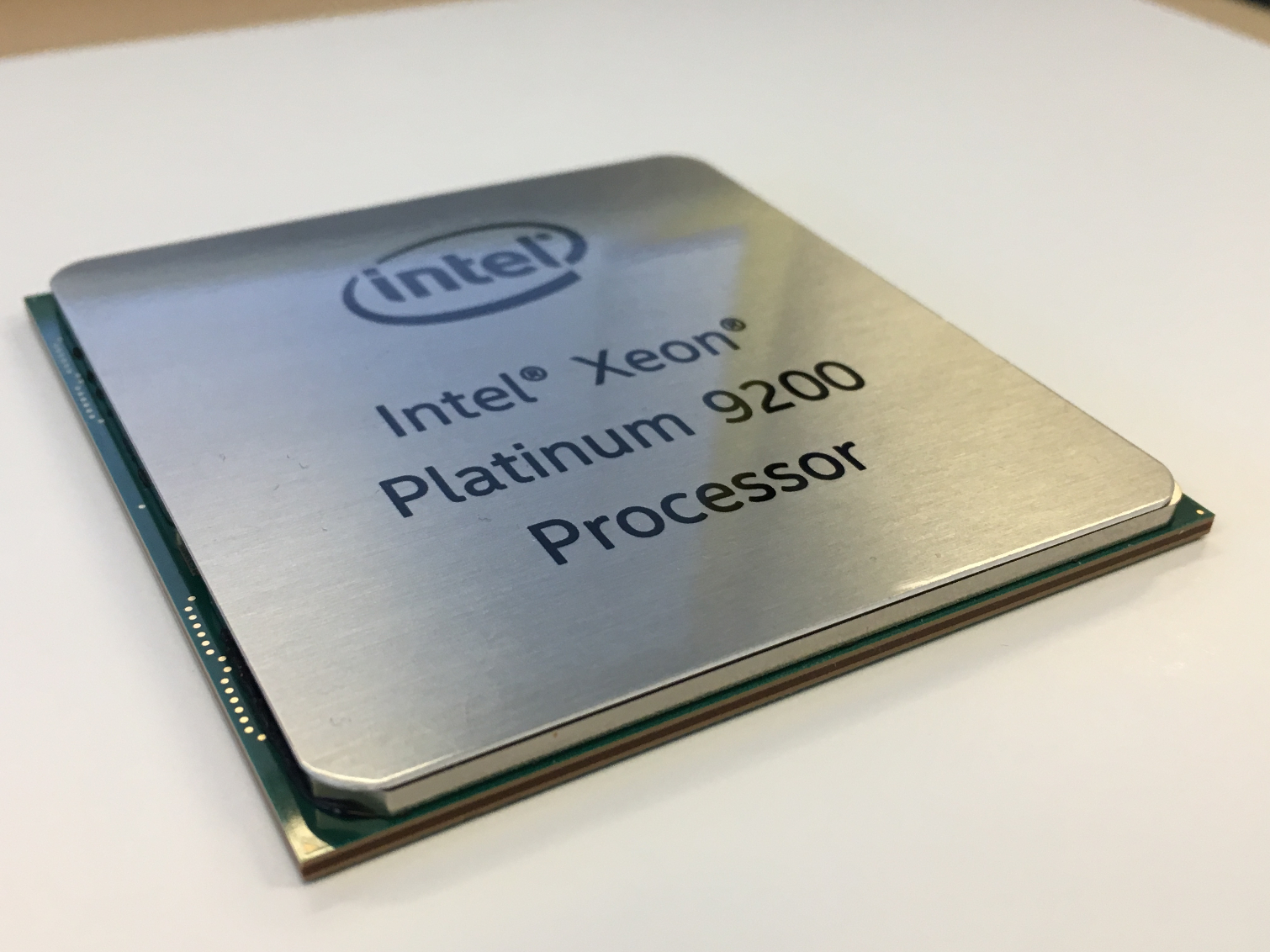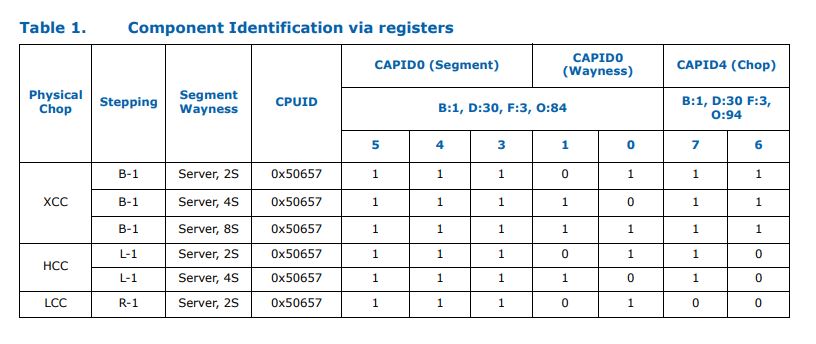Still Silent on Desktop Chips, Intel Outs Multi-Core Turbo Deets for Xeon
Intel no longer discloses multi-core turbo frequencies, which outline how fast a chip goes when a varying number of cores are active, for its desktop processors. But the company continues to provide the information publicly for its Xeon processors, as evidenced by its release of a document outlining the second-gen Xeon Scalable processors (PDF), aka Cascade Lake.
Intel lists the base and single-core turbo frequencies for desktop chips, but the company's refusal to share its multi-core turbo specifications is confusing. Intel has focused on improving these metrics as it contends with AMD's Ryzen processors, leading to solid performance gains, so it would make sense to tout those advantages. Instead, you have to buy a desktop processor to determine its multi-core frequencies, which is a simple task you can accomplish via Intel's own publicly-released XTU software.
There are a few possible reasons behind Intel's decision to stop disclosing these specifications for its desktop chips. As with all of Intel's Turbo Boost frequencies, the company doesn't guarantee consistent operation at the heightened clock speeds, largely because the boost performance is contingent upon several factors, like processor temperature, current, and power delivery.
Intel has turned up the power on its 14nm chips to stave off AMD, which equates to more heat, yet the company often provides sub-par stock cooling solutions that often can't keep the chips cool enough to maintain peak turbo speeds. That obviously might pose a problem if the company lists multi-core turbo frequencies that the chips can't sustain with the bundled stock coolers, but Intel also doesn't disclose multi-core turbo speeds for its desktop processors that come without a bundled cooing solution.
In either case, Intel's practice of hiding these specifications is akin to selling a car without disclosing a critical specification, like gas mileage. The enterprise market apparently isn't as receptive to those tactics, so Intel released these critical Xeon multi-core turbo specifications to the chip-buying public. The chip maker hasn't revealed why it stopped the practice for its desktop chips yet continues to provide those specifications for its Xeon data center processors.
Intel's documentation also confirms that it has developed new U-series Xeon SKUs to tackle AMD in the single-socket server space, and also unsurprisingly confirms the company is still fabbing Xeon chips with three different die.
Intel Second-Generation Xeon Scalable (Cascade Lake) Turbo Ratios
Intel's document doesn't include its new 9000-series chips, like the monster Xeon Platinum 9282 that comes packing up to 56 cores and 112 threads in a dual-die design that has up to a 400W TDP rating. We've followed up with the company for more information on its flagship Xeon chips.
Get Tom's Hardware's best news and in-depth reviews, straight to your inbox.
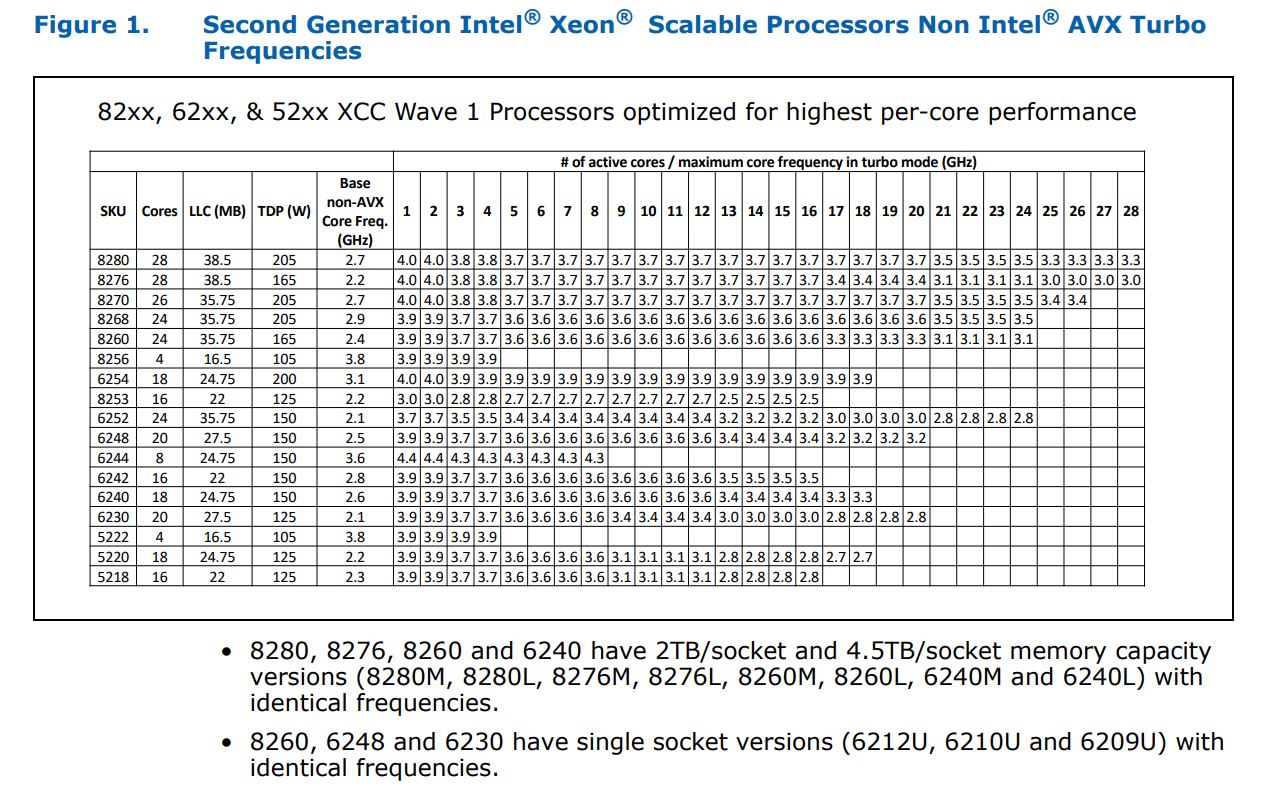
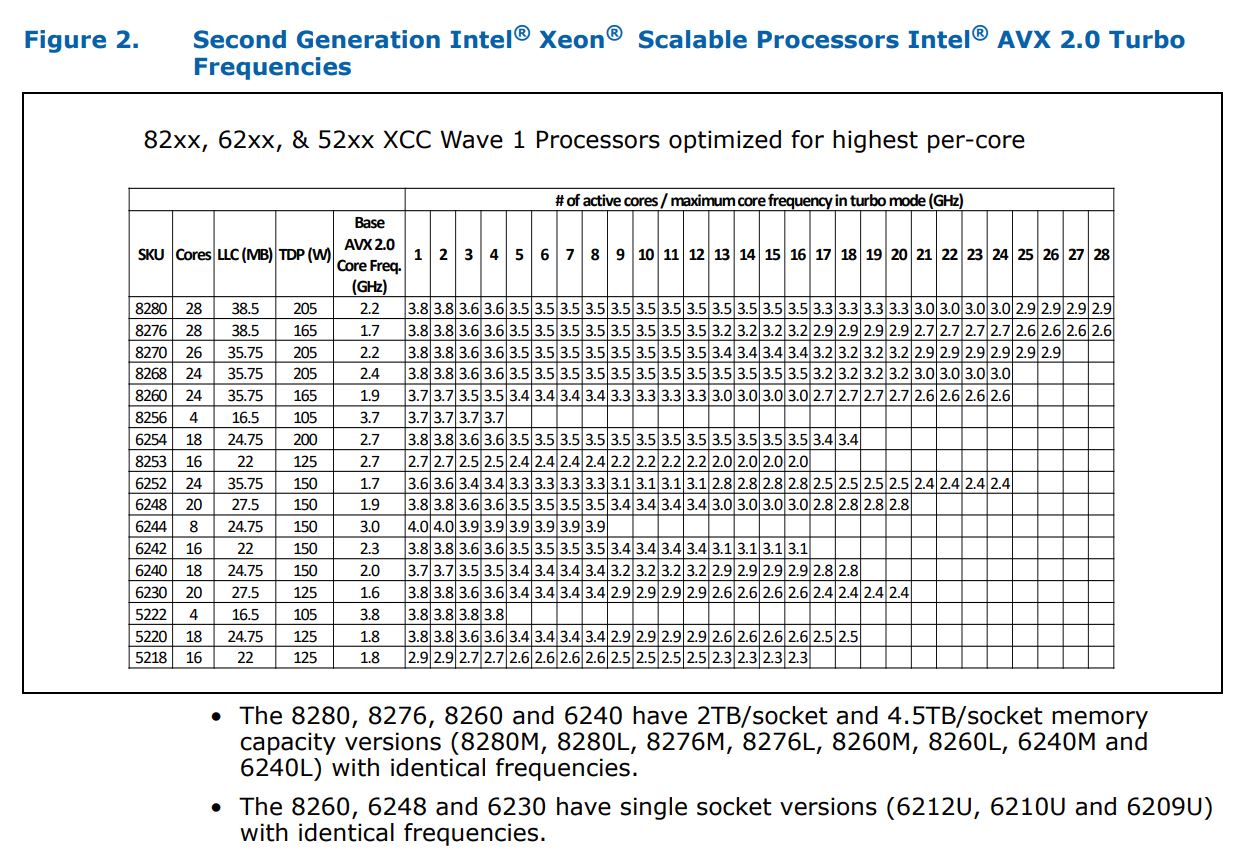
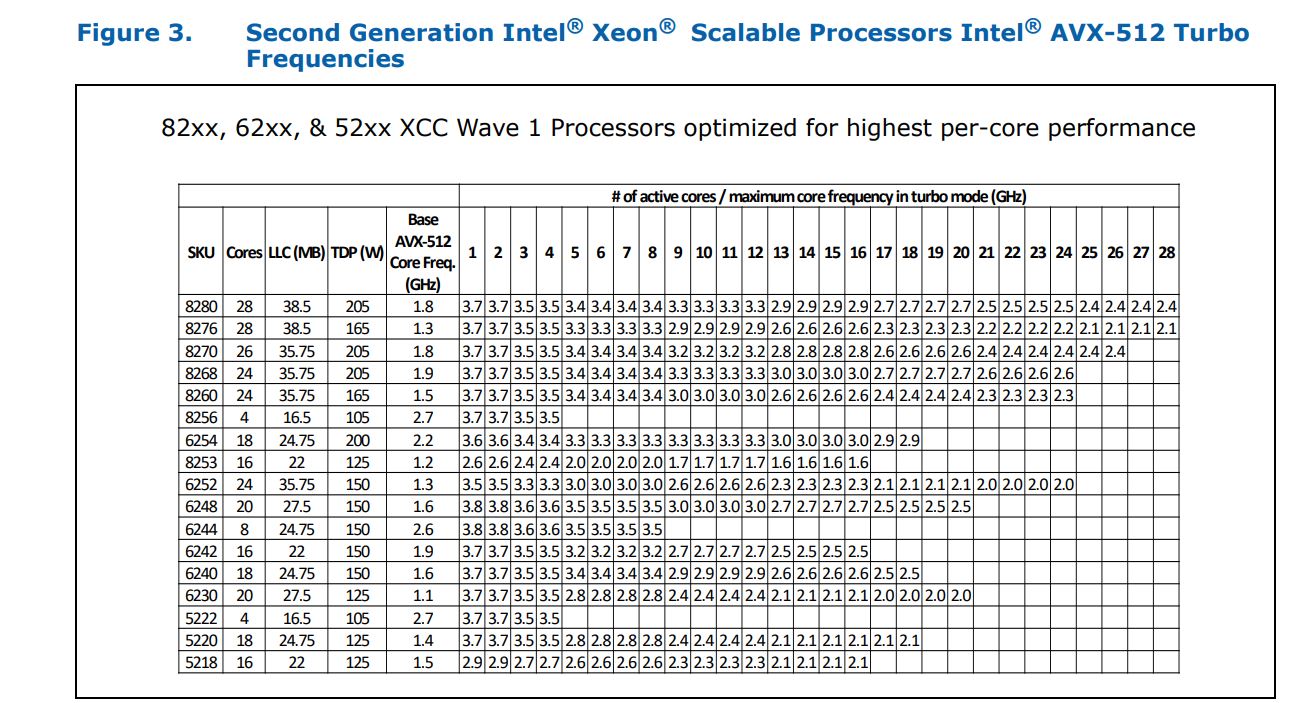
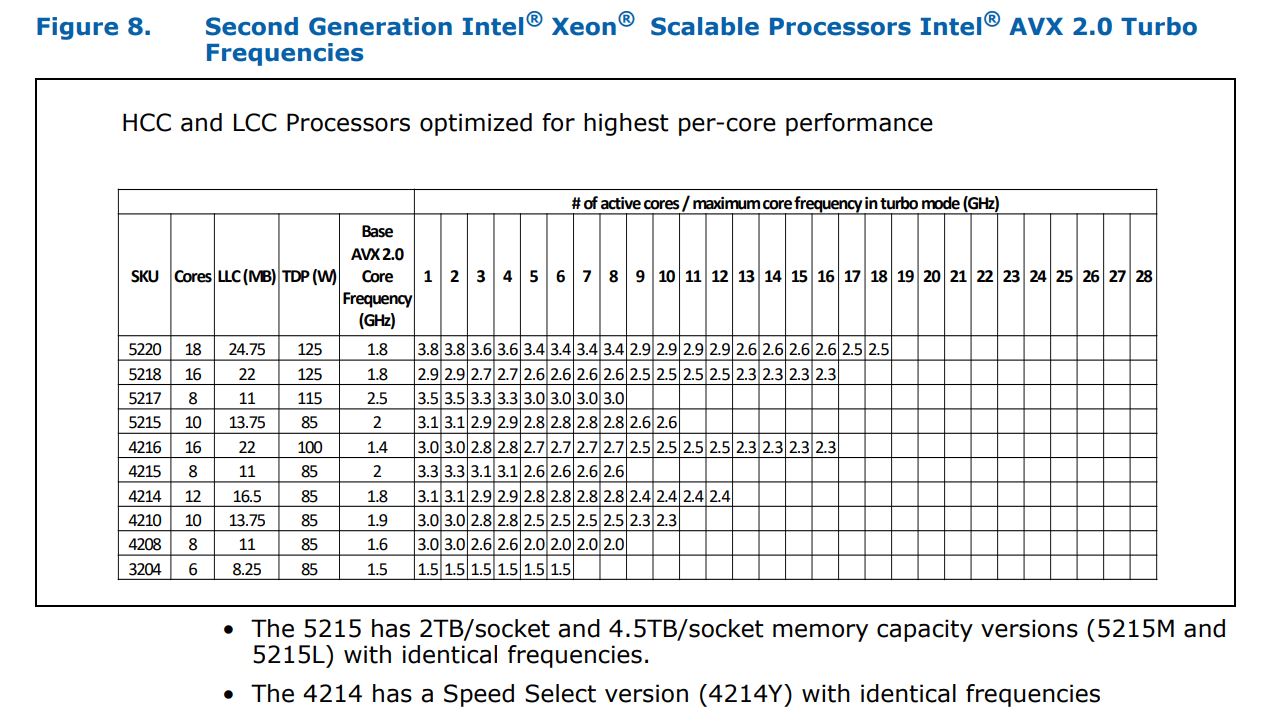
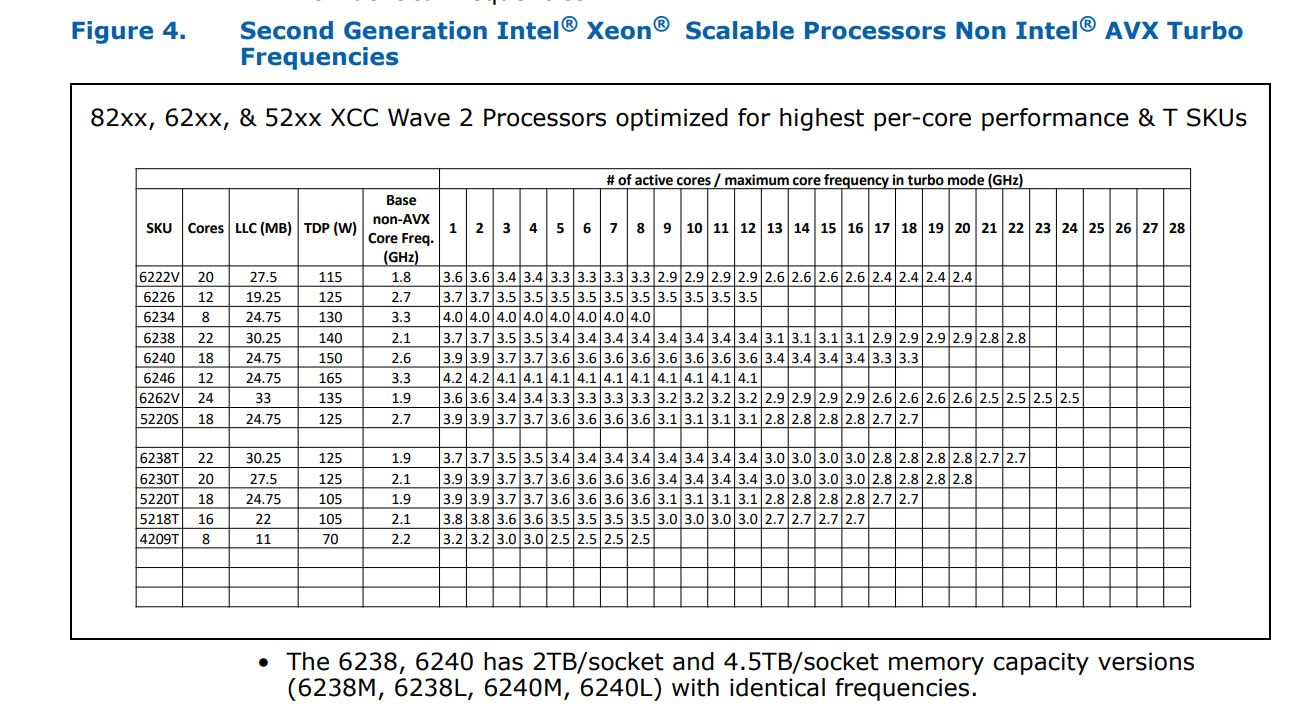
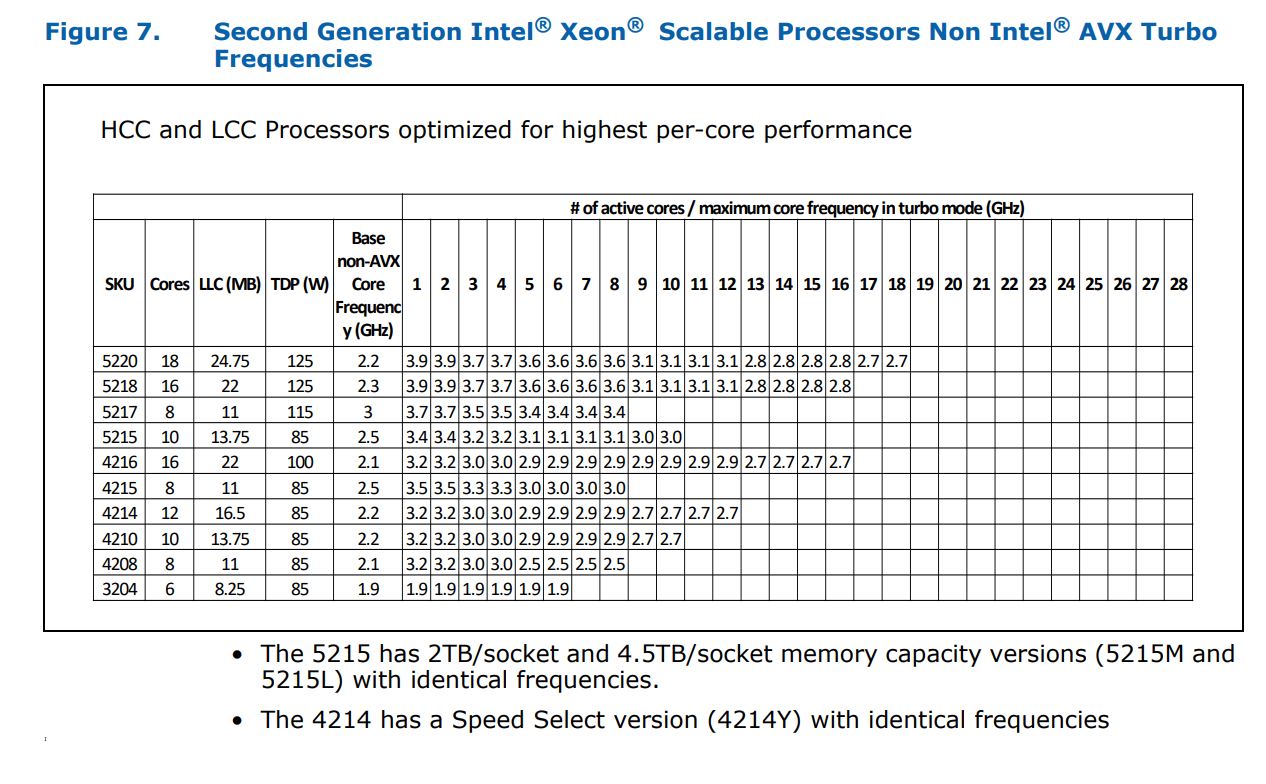

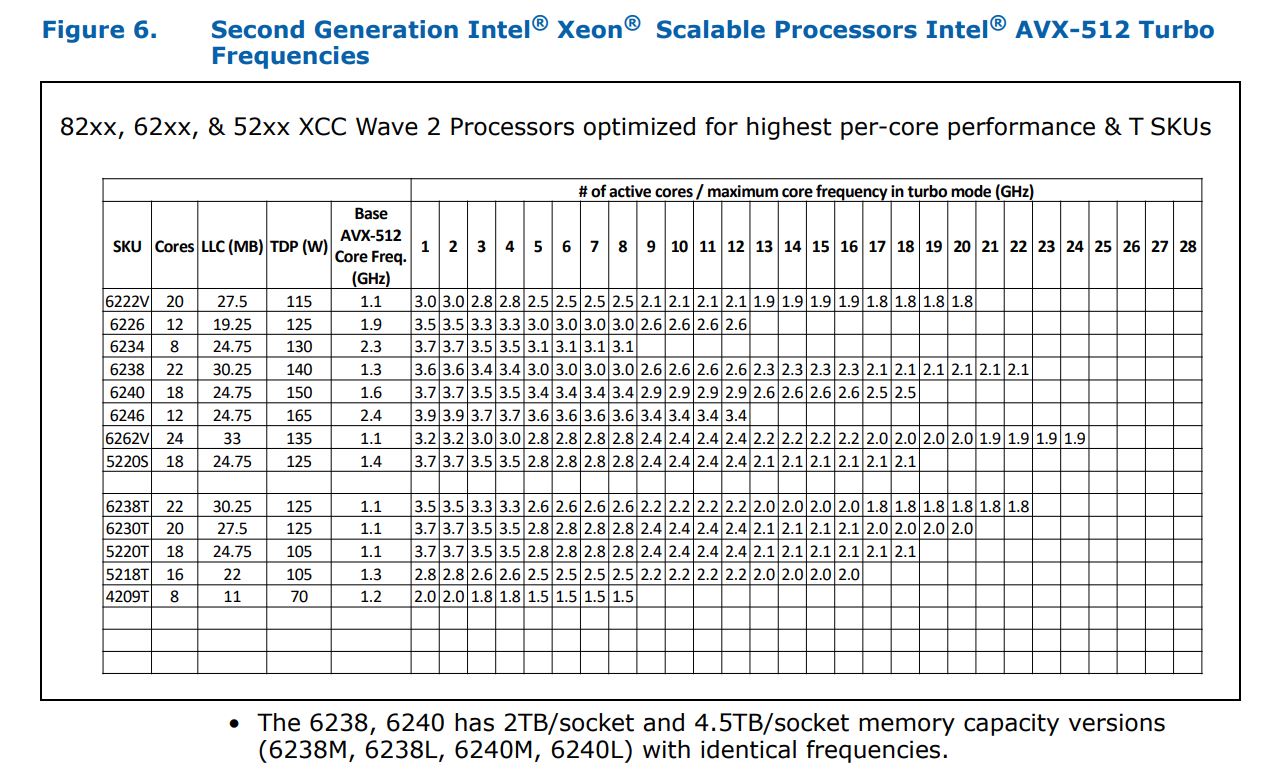

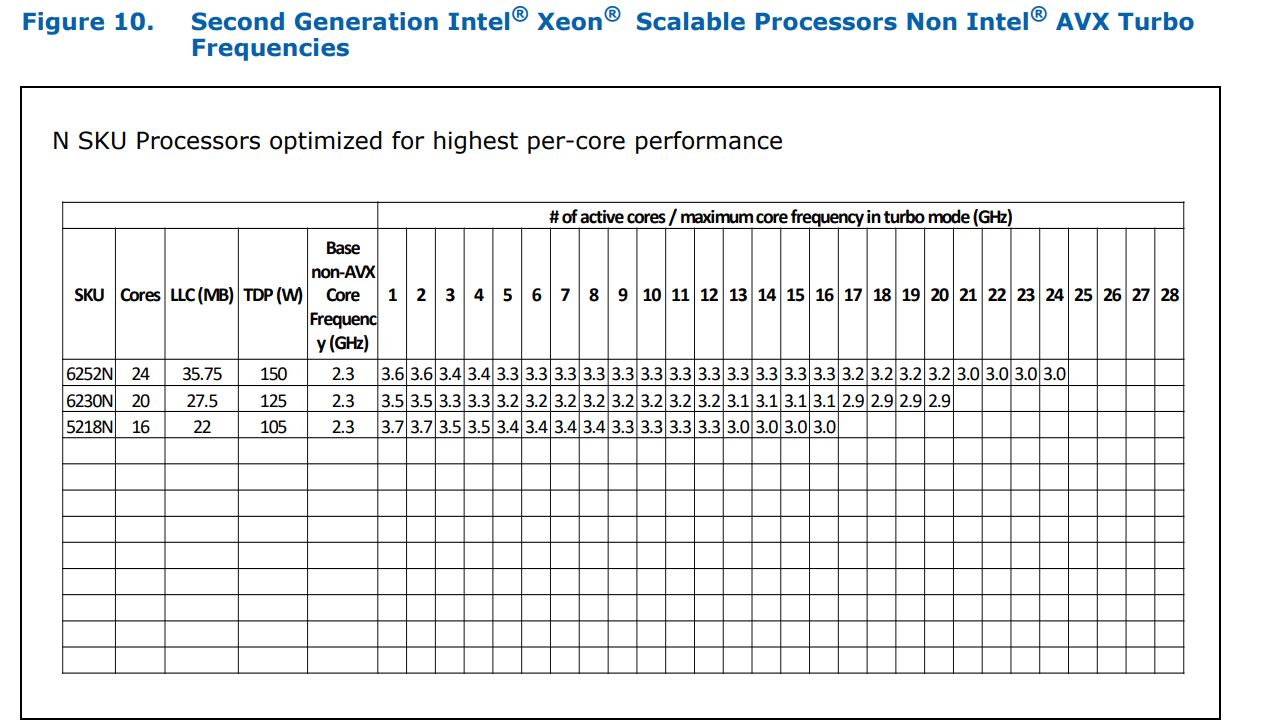
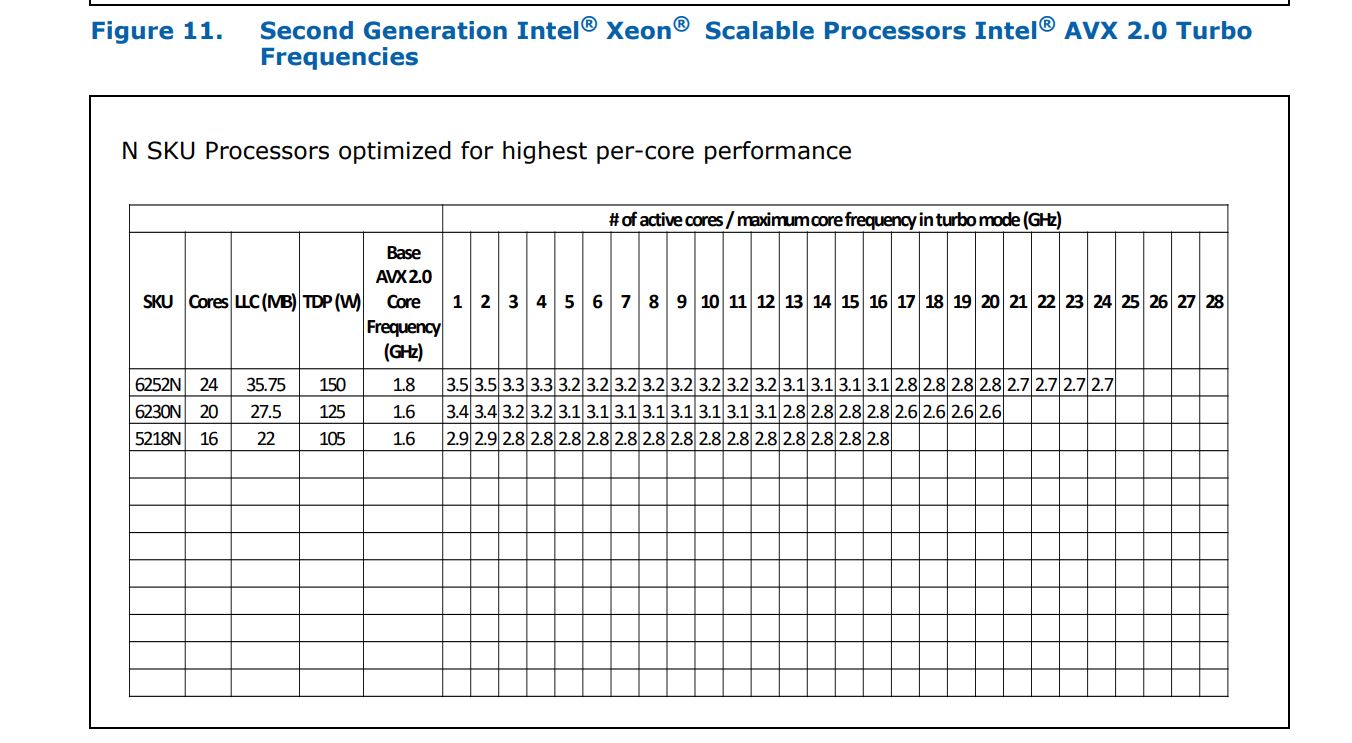
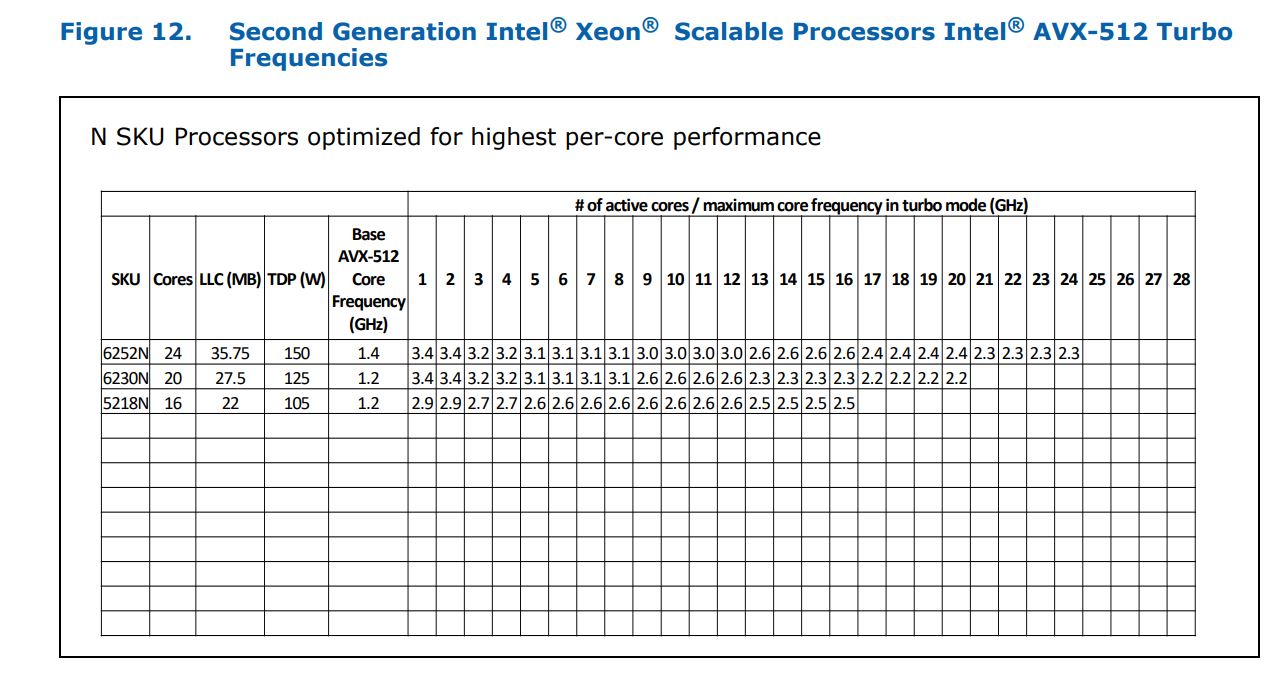
*Credit: Intel
The document confirms the recent news that Intel is rolling out new U-Series chips to tackle AMD's P-Series chips in the single-socket server space. The single-socket 6212U, 6210U and 6209U share the same frequencies with the 8260, 6248, and 6230, respectively, so Intel didn't list these chips in the detailed per-core turbo specifications.
Much like we've seen with Intel's latest consumer chips, comparing the second-gen turbo frequencies of the second-gen Xeon Scalable processors to the first gen models (PDF) reveals tangible increases in multi-core frequencies that equate to boosted performance in real-world applications. Intel has also added more cores on the new lineup for several of the SKUs, and at the same price, which helps improve the price-to-performance ratio.
Densely-packed AVX instructions boost performance tremendously in exchange for heightened power consumption and thermal generation, so as per normal, Intel's chips drop into lower frequencies (~600MHz to 900MHz) during AVX, AVX 2.0, and AVX-512 workloads.
Cascade Lake LCC, HCC, XCC dies
The second-gen Xeon Scalable processors are an iterative update to the previous-gen Purley chips, so it makes sense that Intel continues to fab the processors with the same three die designs. The LCC (Low Core Count) die sports eight cores, while the HCC (High Core Count) stretches up to 18 cores and the XCC (eXtreme Core Count) die stretches up to 28 cores.
We have pinged Intel for more information on the 9000-Series turbo frequencies and will update as necessary.

Paul Alcorn is the Editor-in-Chief for Tom's Hardware US. He also writes news and reviews on CPUs, storage, and enterprise hardware.
